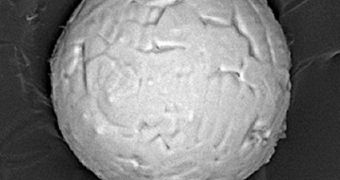The start of the Younger Dryas may have coincided with a large comet breaking up in our planet's atmosphere. The event, believed to have taken place some 13,000 years ago, was first proposed years ago, but thus far insufficient data were available to support the idea.
The Younger Dryas, informally known as the Big Freeze, was a period of extremely cold climatic conditions that lasted for about 1,300 years. It began around 12,800 years ago, and ended some 11,500 years ago, and its most plausible explanation is the collapse of ice sheets throughout North America.
Freezing water from the inland seas, of which the Great Lakes are now a remnant, flowed into the Arctic Ocean, and then into the North Atlantic, stopping the Gulf Stream, and bringing about a small Ice Age all over Europe.
According to the recent study, a cometary impact may have been large enough to contribute to this melting, while at the same time killing off a number of large animals and humans. It could be that such an event contributed to triggering the Younger Dryas, or that it was its main cause.
Scientists are not sure that this happened, due to the fact that they found no impact crater dating from exactly that time. The explanation the new study proposes is that the space rock broke off in pieces high above the surface, a common occurrence in the case of space bodies with dense atmospheres.
Investigations conducted at Lake Cuitzeo, in central Mexico, have recently revealed indicators that at least a chunk of the proposed comet crashed there. Evidence include a number of tiny diamonds, which geologists say could only form at extreme temperatures and pressures.
Melted rock formations called spherules were also found at the site. The two findings are in tune with the proposed theory, says Isabel Israde-Alcántara, an investigator with Universidad Michoacana de San Nicólas de Hidalgo, in Mexico.
Details of the study were published in the March 5 online issue of the esteemed journal Proceedings of the National Academy of Sciences (PNAS). “If you don't have a crater, you're a little bit lost,” researcher Ted Bunch explains.
Bunch holds an appointment as a space scientist at the Northern Arizona University, and was a member of the study team. “Here what we have is something similar to an aerial bomb blast. With these aerial bursts, with time all the evidence is wiped away unless it's buried,” he says.
Additional sites that may hold signs of the proposed impact were found in Canada, the United States, the Russian Federation, Europa and Syria, Space reports.

 14 DAY TRIAL //
14 DAY TRIAL //